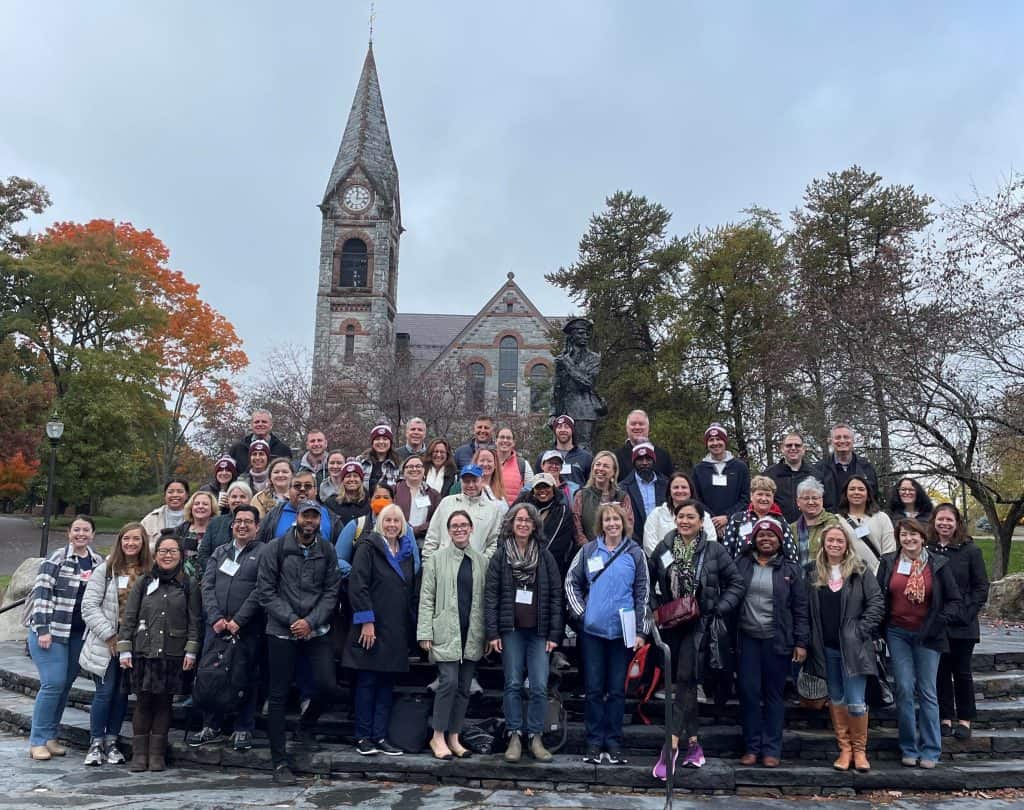College visits are my favorite.
Well, not really. I’d pick snorkeling in the Caribbean or eating soup in a British pub or a few other things over college visits . . . BUT, I still think visiting colleges is one of the best parts of my job. It’s so much fun to see different campuses and to try to get a sense of the personality of each. As I walk around and enjoy the architecture, read bulletin boards, and listen to student guides talk about their experiences, I enjoy thinking about my own students and who would be a good fit.
Interested in visiting vicariously? Follow EMHS College Counseling on Instagram or Facebook. I post images and observations from all my college visits.
In mid-October, I had the privilege of joining a counselor tour of the Five College Consortium in Massachusetts. There are several college consortiums in the country (Baltimore Collegetown Network and the Claremont Colleges, for example), but the Five Colleges is the oldest and most well-established.
The consortium is made up of Amherst, Hampshire, Mount Holyoke, and Smith colleges, and UMass Amherst. These schools all reside within a 20ish-minute radius in scenic western Massachusetts, and they have a unique relationship with one another. Students at any of the colleges may take courses at any other and those courses and grades will translate directly into the home college’s transcript. Students can also participate in clubs, athletics, and other extracurriculars on other campuses. There is a free bus service between the colleges, downtown areas, and shopping malls. They even have a meal exchange program, so if a student is on another campus over a mealtime, they can eat there.
I talked to several students who regularly take advantage of the opportunities the consortium offers. One loved the tight-knit community and academic flexibility of Mount Holyoke but decided that they wanted a major that Mount Holyoke didn’t offer (sports psychology, I think). The student is making it work by taking several classes at UMass Amherst. Another student is a theater major and was able to land roles in productions on several other campuses, enhancing her resume and broadening her experience. Another student wanted to study a language his college didn’t offer (every year, more than 40 languages are taught across the campuses).
Each college definitely had its own unique feel. Here’s a quick snapshot of my two-day whirlwind tour:
Mount Holyoke: 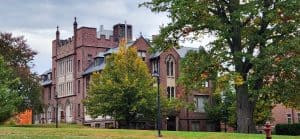
- One of the oldest women’s colleges in the States
- Gender-diverse (accepts anyone but cisgender men)
- Diversity of students is a major focus (all types of diversity, including first-gen, international students, etc.)
- Loads of fun traditions (milk & cookies, Mountain Day, watching Dirty Dancing during Freshman Orientation “Baby is going to Mount Holyoke in the fall,” more)
- Strong community feel (students refer to it as “Mo Home”)
- Described as being similar to Smith, but more laid-back and has a few general education requirements
- Some dated buildings on one side of campus, but most of it is gorgeous historic buildings that have been well maintained and have modern interiors
Amherst College: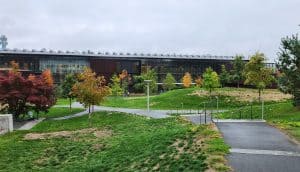
- Most highly selective on our tour: accepts 9% of applicants
- New president, took time to meet us–highly energetic and charismatic
- Strong advising program, new programs designed to support first-gen and minority students
- Open curriculum: no gen-ed requirements, though through their advising, students usually take a variety of classes across disciplines
- Impressive student panel–it’s clear they feel closely connected with professors and have been given many opportunities for research, internships, etc.
- “Students who come here learn how to learn.”
- Although it’s a highly rejective college, students report that the academic load is not overwhelming and the atmosphere is collaborative rather than competitive
- Large mix of building styles and materials; nice campus but doesn’t feel as cohesive as some; very hilly
Smith College: 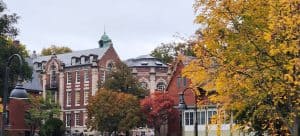
- Attractive campus right on the edge of Northampton, a fantastic college town with lots of restaurants and shops within walking distance of the school
- Women’s college: admissions not quite as open as Mount Holyoke–more selective and students must identify as female (cis, trans, and nonbinary are welcome)
- Students are known as “Smithies”
- Open curriculum: similar to Amherst, there are no gen-ed requirements–the only non-negotiable is a writing-intensive first-year seminar; many students double-major
- First women’s college to offer an accredited engineering program
- Residence halls are “houses” with their own unique character
- Many traditions, including Friday afternoon tea
- Rigorous academics, impression is of very smart students who are passionate about their areas of study
- Students feel empowered to make change, be involved
University of Massachusetts Amherst: 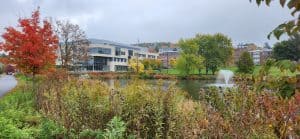
- Flagship campus of UMass, nearly 23,000 students
- Campus is arranged as a bullseye with academic buildings in the center, residence halls and dining around them, and sports arenas and other extracurricular and support programs on the outside ring
- Known for good food (ranked #1 in Princeton Review)
- Huge range of academic programs (over 100 majors over 10 schools); described as “research powerhouse”; Isenberg School of Management (business school) is well-known and admission is competitive
- Students must apply to a specific major, but can usually transfer once enrolled
- computer science, Isenberg, and nursing are most competitive programs with 20-45% admission rate; engineering is surprisingly at a 70% admission rate; no restrictions on how many out-of-state students they can admit (good news for us!)
- Students are automatically considered for the honors college, which offers a lot of benefits, including best housing on campus
- Campus is walkable and quite attractive despite a wide variety of building styles; students seem active and friendly–campus felt lively
Hampshire College: 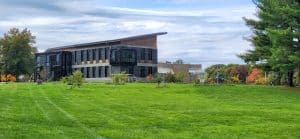
- Most unique of all the colleges we visited; set back in wooded area behind working farm
- Innovative curriculum: college is known for reinventing higher education
- Students don’t get grades, but rather receive written feedback which goes on transcript; students don’t have “majors” but rather design their own curriculum with lots of input and advice from advisors
- Not divided into freshman-sophomore-etc., but rather divisions: Division 1 is first year students (exploratory curriculum); Division 2 is second and third years (getting into the meat of their chosen field(s); Division 3 is fourth year (main focus is a “master’s level project” relating to their area of interest)
- Definitely a niche school: highly diverse in terms of neurodivergent learners, BIPOC, and LGBTQ+ (minority of students are cis-gender); a great option for students who are self-directed and non-traditional thinkers
- Campus is peaceful and attractive, but felt a little empty of students; guide said that was typical but also said they had no problem finding friends and there’s an active social scene
